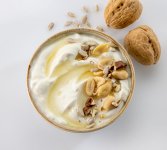Now that the holidays are winding down, I realize that I haven't been paying attention to my health and have been eating a lot of really decadent foods. I have also gained five pounds. So, I plan to eat a lot lighter after new Year's is over. I made a list of some great foods to focus on.
Greek Salad:
Greek salad is a staple in traditional Greek cuisine. It is known for its simplicity, freshness, and nutritional value. A Greek salad typically consists of lettuce, tomatoes, cucumbers, onions, feta cheese, and kalamata olives, all drizzled with olive oil and lemon juice. This salad is a great way to add more vegetables to your diet and start your meal on a healthy note.
Grilled Fish:
Greek cuisine is famous for its seafood dishes. Fish is a great source of lean protein, omega-3 fats, and other essential vitamins and minerals. Grilled fish is a healthy option that can be flavored with a variety of Greek spices and herbs, such as oregano, dill, and thyme. Add a side of roasted or grilled vegetables, and you have a delicious and healthy meal.
Lentil Soup:
Lentil soup is another staple in Greek cuisine. It is a hearty and healthy soup that is loaded with fiber, protein, and essential vitamins and minerals. Lentil soup is easy to make, and you can add various vegetables and spices, such as onions, garlic, carrots, and celery. It is a perfect meal for those cold winter evenings, and it keeps you full for hours.
Stuffed Vegetables:
Stuffed vegetables are another popular Greek dish that is both healthy and flavorful. Greek stuffed vegetables can be made with various vegetables such as bell peppers, zucchinis, and tomatoes. The filling usually consists of rice, herbs, onions, tomatoes, and other vegetables. You can add some feta cheese on top for extra flavor. They are perfect for a light lunch or dinner.
Greek Yogurt:
Greek yogurt is a healthy and delicious alternative to regular yogurt. It is low in calories and high in protein, making it a perfect snack or meal replacement. Greek yogurt can be used for various dishes such as sauces, dips, and even desserts. You can add some honey, nuts, or fruits to add extra flavor to your Greek yogurt.

Greek Salad:
Greek salad is a staple in traditional Greek cuisine. It is known for its simplicity, freshness, and nutritional value. A Greek salad typically consists of lettuce, tomatoes, cucumbers, onions, feta cheese, and kalamata olives, all drizzled with olive oil and lemon juice. This salad is a great way to add more vegetables to your diet and start your meal on a healthy note.
Grilled Fish:
Greek cuisine is famous for its seafood dishes. Fish is a great source of lean protein, omega-3 fats, and other essential vitamins and minerals. Grilled fish is a healthy option that can be flavored with a variety of Greek spices and herbs, such as oregano, dill, and thyme. Add a side of roasted or grilled vegetables, and you have a delicious and healthy meal.
Lentil Soup:
Lentil soup is another staple in Greek cuisine. It is a hearty and healthy soup that is loaded with fiber, protein, and essential vitamins and minerals. Lentil soup is easy to make, and you can add various vegetables and spices, such as onions, garlic, carrots, and celery. It is a perfect meal for those cold winter evenings, and it keeps you full for hours.
Stuffed Vegetables:
Stuffed vegetables are another popular Greek dish that is both healthy and flavorful. Greek stuffed vegetables can be made with various vegetables such as bell peppers, zucchinis, and tomatoes. The filling usually consists of rice, herbs, onions, tomatoes, and other vegetables. You can add some feta cheese on top for extra flavor. They are perfect for a light lunch or dinner.
Greek Yogurt:
Greek yogurt is a healthy and delicious alternative to regular yogurt. It is low in calories and high in protein, making it a perfect snack or meal replacement. Greek yogurt can be used for various dishes such as sauces, dips, and even desserts. You can add some honey, nuts, or fruits to add extra flavor to your Greek yogurt.



